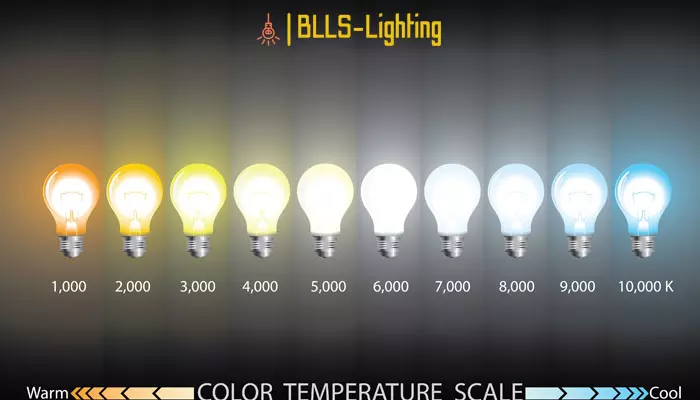In an era where our lives are intricately intertwined with electricity, the importance of circuit breakers goes beyond mere convenience; they are an essential safety mechanism in every electrical system. A circuit breaker is a critical device designed to protect homes, offices, and industrial spaces from electrical hazards like overloads and short circuits.
Its role in preventing fire outbreaks and safeguarding electrical appliances cannot be overstated. As we delve into the fundamental question, “What is a circuit breaker?”, it becomes clear that understanding its operation, recognizing its ubiquitous symbol, and exploring the various types of circuit breakers available, equips us with the knowledge to appreciate the unseen yet critical layers of protection they provide in our daily electrical interactions.
Understanding Circuit Breakers: Protecting Your Electrical System
At the heart of every safe and efficient electrical system lies a pivotal component known as the circuit breaker. This essential device monitors and manages the flow of electricity, protecting our homes from potential issues.
What are Circuit Breakers?
Circuit breakers are essential electrical safety devices that protect against electrical fires and damage. They automatically interrupt electrical current when it exceeds a predetermined threshold, preventing overloads and short circuits.
Understanding Their Function
Circuit breakers contain tripping mechanisms that monitor electrical current flow. When an overload or short circuit occurs, these mechanisms trip, cutting off the electrical supply and protecting the circuit and equipment.
Differentiating Circuit Breakers
There are different types of circuit breakers, each designed for specific electrical protection purposes:
- Ground Fault Circuit Interrupters (GFCIs): Protect against electrical shock hazards by detecting imbalances between incoming and outgoing electrical current.
Troubleshooting Tips
If a circuit breaker trips, identify the cause of the electrical overload or short circuit. Reset the circuit breaker to restore power, but if the problem persists, it’s crucial to contact a qualified electrician for further investigation and repairs.
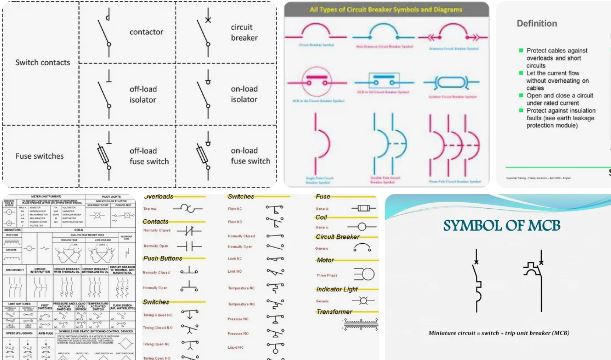
Components of a Circuit Breaker
A circuit breaker is an electrical protection device that interrupts electrical current to prevent damage to electrical equipment and potential fire hazards. Its anatomy comprises several key components:
Main Components:
- Frame: Houses all circuit breaker components within a sturdy enclosure.
- Contacts: Conductors responsible for allowing or interrupting electrical flow.
- Arc Extinction Device: Extinguishes electrical arcs during circuit breaker trips.
- Trip Mechanism: Detects overloads and separates contacts to interrupt current flow.
- Operating Mechanism: Controls the opening and closing of the circuit breaker.
- Terminal Connections: Entry and exit points for electrical wires.
Additional Anatomy:
- Arc Chutes: Cool and dissipate electrical arcs.
- Bi-Metallic Strip: A thermal trip unit component that flexes with current-generated heat, triggering circuit breaker tripping.
- Calibration Screw: Finely adjusts the circuit breaker to electrical specifications.
Understanding the components and their functions highlights the complexity and importance of circuit breakers in ensuring electrical safety and preventing circuit breaker malfunctions.
Embarking on the Journey to Understand Circuit Breakers
Circuit breakers are essential devices in our electrical systems, protecting our homes and businesses from dangerous electrical incidents. For safety and optimal performance, it’s crucial to unravel their workings.
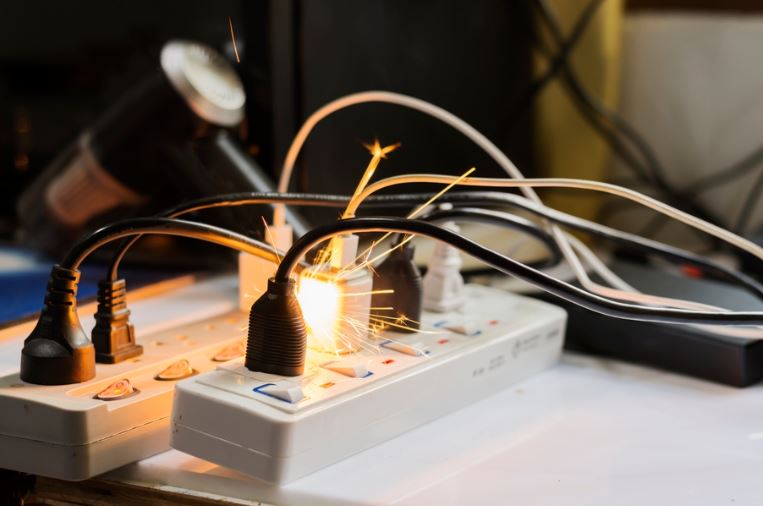
Tripping Mechanisms Explained
Circuit breakers are equipped with sophisticated tripping mechanisms that monitor the electrical current flowing through the circuit. These mechanisms detect overloads and faults, ensuring timely intervention.
- Thermal Tripping:
- Thermal tripping relies on bimetallic strips that bend when heated by excessive current.
- As the current increases beyond the safe operating limit, the strips bow, triggering a trip that disconnects the circuit.
- Magnetic Tripping:
- Magnetic tripping operates when high current levels create a strong magnetic field.
- This field activates electromagnets, pulling apart contacts and interrupting the current flow.
Overload Protection and Sensing Faults
Circuit breakers serve as the first line of defense against overloads, shielding our electrical equipment and infrastructure.
- Overload Protection:
- Circuit breakers have inbuilt sensors that monitor current levels to detect overloads.
- When the current exceeds the set threshold, the circuit breaker disconnects the circuit, preventing damage to electrical components.
- Fault Detection:
- Circuit breakers can also sense faults such as short circuits and ground faults.
- Short circuits occur when current takes an unintended path, causing a sudden surge that can overwhelm electrical systems.
- Ground faults arise when current escapes from wires and flows through unwanted paths, potentially causing electric shocks or fire.
Types of Circuit Breakers and Their Applications
1. Miniature Circuit Breaker (MCB)
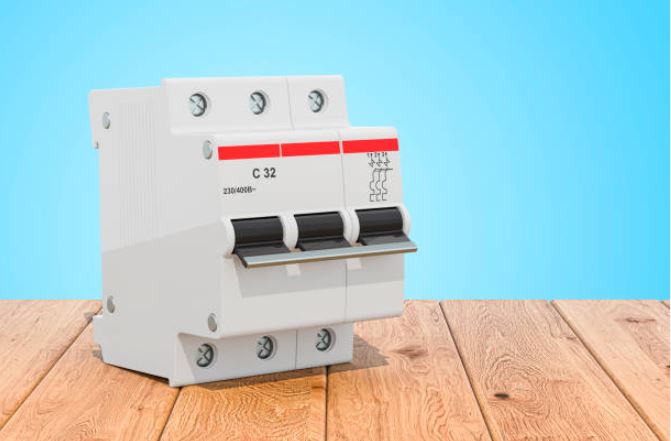
MCBs are compact devices designed to safeguard low-amperage circuits found in residential and commercial settings. They are commonly used to protect lighting and outlet circuits. These breakers automatically interrupt the current flow during overload or short circuit conditions, providing essential protection against electrical hazards.
2. Molded Case Circuit Breaker (MCCB)
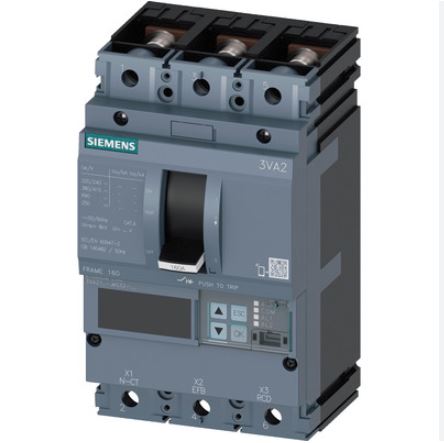
MCCBs cater to higher current ratings and offer adjustable settings, making them suitable for industrial and commercial applications. These breakers are frequently encountered in data centers, commercial buildings, and manufacturing plants. Their advanced features enable customized protection for critical electrical systems.
3. Ground Fault Circuit Interrupter (GFCI)
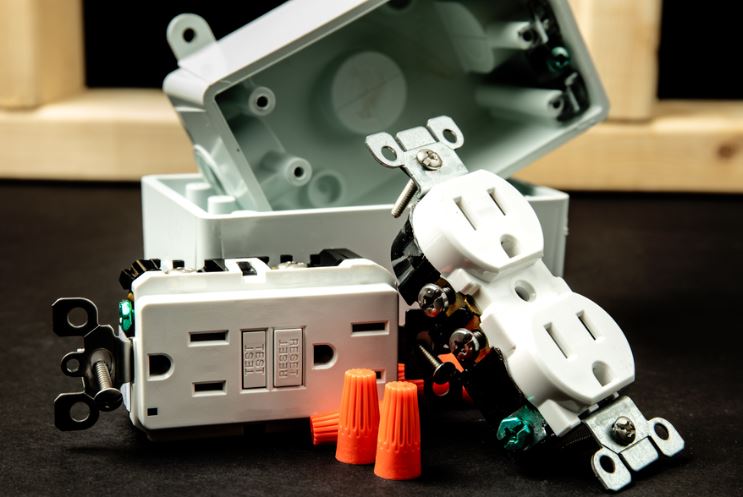
GFCIs play a pivotal role in preventing electrical shock by detecting ground faults. These faults occur when electrical current escapes its intended path, potentially posing a significant danger. GFCIs are indispensable in wet locations such as bathrooms, kitchens, and outdoor areas, where moisture can increase the risk of electrical hazards.
4. Air Circuit Breaker (ACB)
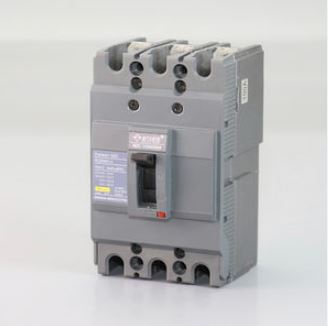
ACBs utilize air as the arc extinguishing medium, making them suitable for low-voltage, high-current applications. These breakers are commonly found in main power distribution systems, where they provide reliable short circuit protection. Their ability to handle substantial currents makes them essential for ensuring the safe and uninterrupted operation of electrical grids.
5. Vacuum Circuit Breaker (VCB)
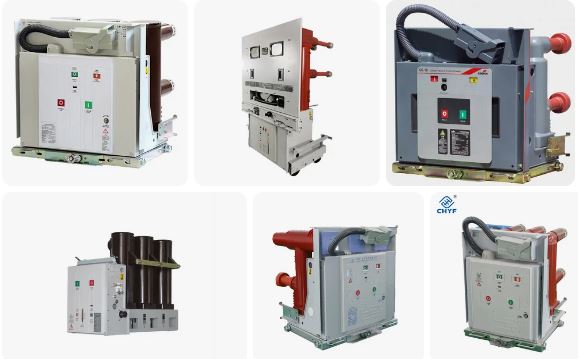
VCBs employ vacuum as the interrupting medium, which offers exceptional insulating properties. They are commonly used in medium voltage applications, such as substations and industrial distribution systems. The vacuum environment within these breakers significantly reduces arcing and contact erosion, enhancing their reliability and longevity.
Each of these circuit breaker types comes with its own set of benefits tailored to specific environments and electrical load requirements. Whether it’s the easy-to-reset miniature circuit breaker for a household, the moisture-protecting GFCI vs circuit breaker for bathroom installations, or the heavy-duty air circuit breaker safeguarding an industrial plant, there’s a circuit breaker designed for nearly every application imaginable.
Installing Circuit Breakers
To ensure safe and proper installation of circuit breakers, it’s essential to follow these guidelines:
- Selecting the Correct Amperage and Size:
- Determine the electrical load to calculate the appropriate amperage rating for the circuit breaker.
- Adhere to local electrical codes and regulations regarding power circuit requirements.
- Choose a circuit breaker with an amperage rating that slightly exceeds the current needs (80% rule) to allow for future expansion.
- Understanding Dedicated Circuits for Appliances:
- Heavy-duty appliances require dedicated circuits to prevent circuit overloads and ensure reliable operation.
- High-power appliances like dryers and ranges may require specialized types of circuit breakers.
- Installing dedicated circuits may necessitate professional assistance due to the complexities of wiring and electrical requirements.

Maintaining and Testing Your Circuit Breakers: Regular Inspection for Optimal Functionality
Regular maintenance is crucial for ensuring the proper functioning of your circuit breakers, essential devices that protect your electrical system from overcurrents and faults. Maintaining circuit breakers involves regular visual inspections and testing:
- Visual Inspections: Inspect circuit breakers regularly for any signs of wear, damage, or overheating. Look for loose connections, corrosion, or any other anomalies that may compromise their functionality.
- Test Trip Button: Simulate a fault by pressing the test trip button on the breaker. A properly functioning breaker should trip, interrupting the current flow. This test verifies the tripping mechanism’s responsiveness and ensures it will operate as intended in the event of an actual fault.
- Resetting Switches: When resetting circuit breakers, listen for a firm click, indicating proper engagement. This audible feedback ensures that the internal contacts are making good contact and the breaker is ready to provide protection.
Regular inspections and testing help extend the lifespan of your circuit breakers and enhance the safety of your electrical system. By proactively maintaining these devices, you can minimize the risk of electrical hazards and ensure the reliable operation of your electrical equipment.
When to Replace or Upgrade Your Circuit Breakers?
In certain situations, it becomes necessary to replace or upgrade your circuit breakers. Here are a few indicators:
- Frequent Tripping: If a circuit breaker trips frequently, it may be overwhelmed by the electrical load. This can indicate an overloaded circuit or a failing device. Replacing the breaker with one of a higher capacity may be necessary.
- Physical Damage or Wear: Physical damage, such as a burnt smell or cracks, necessitates immediate replacement. Damaged breakers can pose a safety hazard and should be replaced promptly.
- Outdated Technology: Older circuit breakers may not offer the same level of protection as modern models. Upgrading to breakers with advanced trip mechanisms can improve electrical safety and prevent nuisance tripping.
- Expanding Electrical Demand: If you’re adding new electrical appliances or equipment, your electrical demand may increase. In such cases, it may be necessary to upgrade to higher capacity circuit breakers to ensure adequate protection for the increased load.
By paying attention to these indicators and taking appropriate action, you can ensure that your circuit breakers remain effective in protecting your electrical system and keeping your home or business safe.
How to Handle a Tripped Circuit Effectively
Electrical circuits are protected by devices called circuit breakers which automatically interrupt the flow of electricity to prevent damage to electrical equipment. When a circuit breaker trips, it means that too much current has flowed through the circuit, causing it to open and stop the current.
Steps to Handle a Tripped Circuit:
- Identify the Tripped Circuit: Locate the electrical panel and examine the circuit breakers. The tripped breaker will be in the “”off”” position.
- Assess for Damage: Inspect the tripped breaker for any signs of damage, such as burns or cracks. If there is any damage, do not attempt to reset it.
- Unplug Devices: Unplug all electrical devices connected to the affected circuit. This will reduce the load when you reset the breaker.
- Reset the Breaker: Push the tripped breaker firmly to the “”off”” position and then to the “”on”” position. Do not hold it in place.
- Reconnect Devices: Gradually reconnect electrical devices one at a time, starting with low-wattage appliances. Observe if the breaker trips again.
Identifying and Solving Frequent Tripping
Frequent circuit tripping can indicate an underlying electrical issue. Common causes include:
- Overloaded Circuit: When too many devices are plugged into a single circuit, the current demand exceeds the circuit’s capacity, causing the breaker to trip.
- Short Circuit: A short circuit occurs when a live wire comes into contact with a neutral or ground wire, creating a path of low resistance. The high current flow trips the breaker.
- Ground Fault: A ground fault happens when a live wire touches the ground wire, allowing current to escape and trip the breaker.
- Faulty Appliance: A malfunctioning appliance can draw excessive current and cause the breaker to trip.
Troubleshooting Frequent Tripping:
- Check for Overloaded Circuit: Unplug all devices on the affected circuit. If resetting the breaker successfully, gradually reconnect devices while monitoring for tripping.
- Inspect for Short Circuit: Contact a qualified electrician to inspect the wiring for any damage or loose connections.
- Use GFCIs: Ground Fault Circuit Interrupters (GFCIs) detect ground faults and trip the circuit to prevent electrical shocks. Use GFCIs in areas with moisture, such as bathrooms and kitchens.
- Test Appliances: Test each appliance individually by plugging it into a different circuit. If it trips the breaker on all circuits, the appliance is likely faulty.
Innovations in Circuit Breaker Technology
1. Smart Circuit Breakers: Enhancing Electrical Safety and Efficiency
Smart circuit breakers integrate with the Internet of Things (IoT), enabling real-time monitoring of device health and functionality. This enhanced connectivity empowers users with valuable insights, allowing them to proactively prevent power interruptions and ensure optimal performance.
2. Arc-Fault Circuit Interrupters (AFCIs): Protecting Against Fire Hazards
Arc-fault circuit interrupters (AFCIs) are designed to detect electrical arc anomalies, effectively preventing potential fires. These devices detect arcs that result from loose connections or damaged insulation, providing an additional layer of protection against electrical hazards.
3. Vacuum Circuit Breakers: Embracing Sustainable Practices
Vacuum circuit breakers employ vacuum technology to enhance longevity and environmental friendliness. By eliminating hazardous insulating gases, these breakers offer a cleaner and more sustainable alternative to traditional designs.
4. Compact Designs: Enhancing Aesthetics and Space Efficiency
Modern circuit breakers have embraced miniaturization, providing the same power with a compact footprint. This allows for flexible installation in both residential and commercial settings, complementing modern aesthetics while optimizing space utilization.
Conclusion: Revolutionizing Circuit Protection
These circuit breaker innovations collectively enhance functionality, promote safety, and foster a more responsive and integrated approach to power management. Smart integration, fire prevention, environmental sustainability, and compact designs contribute to a resilient and dynamic electrical landscape, ensuring the safe and efficient utilization of electrical power.
Conclusion
As we’ve journeyed through the intricate world of circuit breakers, delving into their components, functionality, and even peeking into their future, it’s clear that they are much more than mere switches on a wall. They are the unsung heroes that stand guard over our homes, businesses, and industries, protecting them with silent vigilance. From the reset circuit breaker to the latest innovations in circuit breaker technology, each plays a critical role in our daily lives—ensuring that we remain powered, protected, and at peace.
While they serve an indispensable role in shielding our indoor environments, circuit breakers also extend their protective embrace outdoors. As our attention shifts from the inner workings of our homes to the exterior spaces we cherish, the connection between circuit breakers and outdoor lighting becomes apparent.
As such, let us take the opportunity to explore how innovative pool deck lighting ideas can add aesthetic allure and functional brilliance to your leisure areas. Rest assured, your outdoor lighting, too, remains under the steadfast watch of these vigilant guardians, ensuring that every luminous moment is both enchanting and, most importantly, safe.
Join us as we delve into the spirited world of pool deck lighting, where imaginative illumination meets the reliability of our trusted circuit breakers, enhancing the backdrop for our nighttime gatherings and solitary retreats under the stars.

